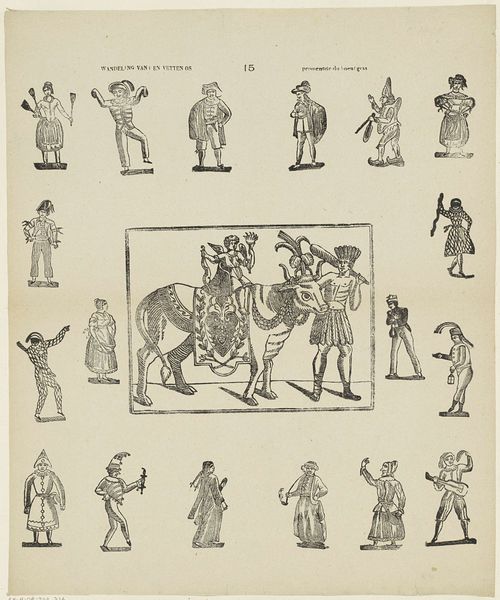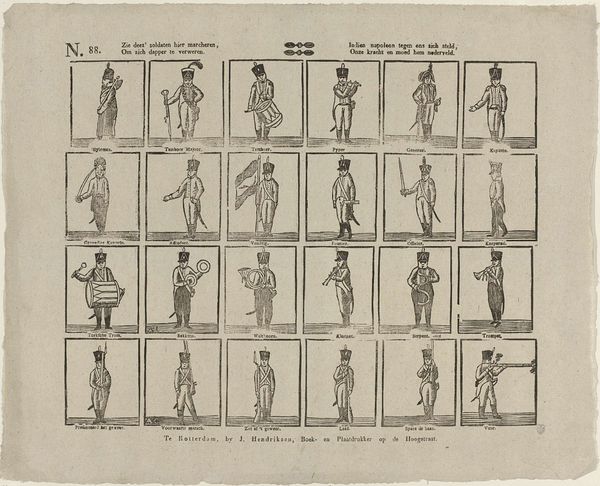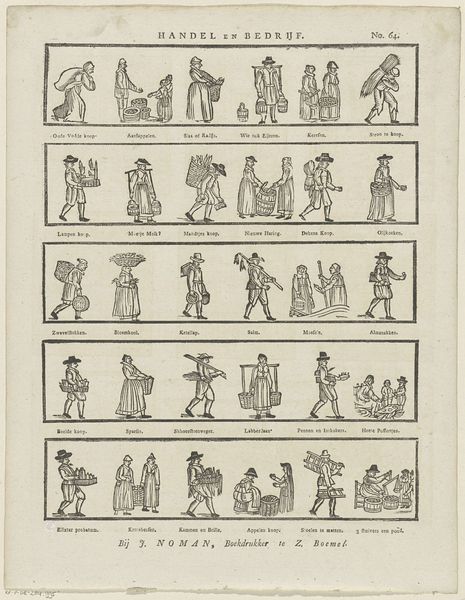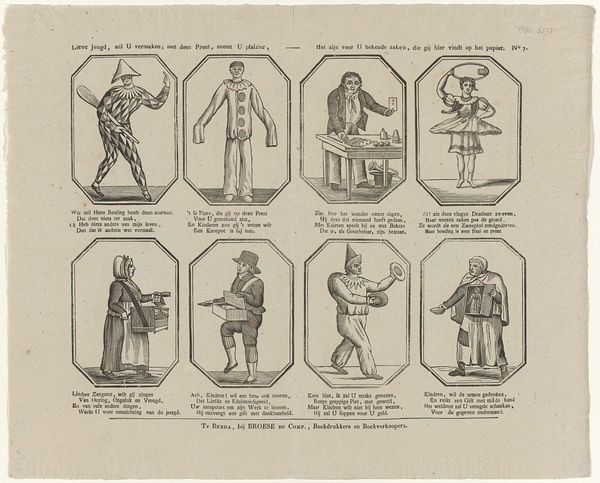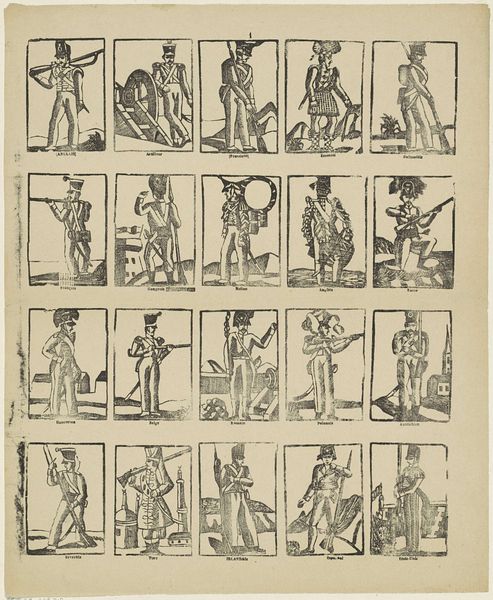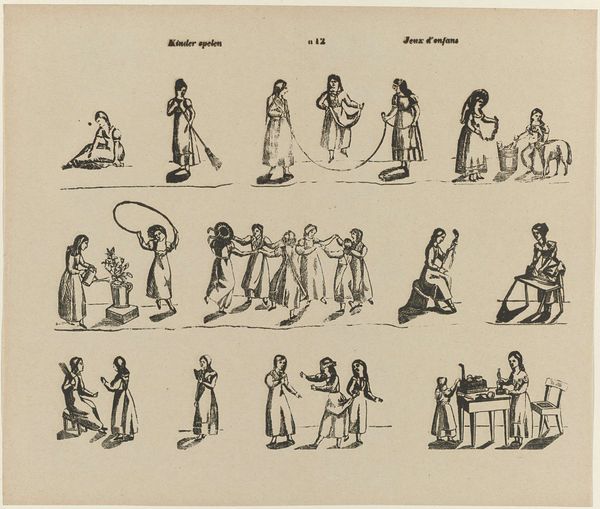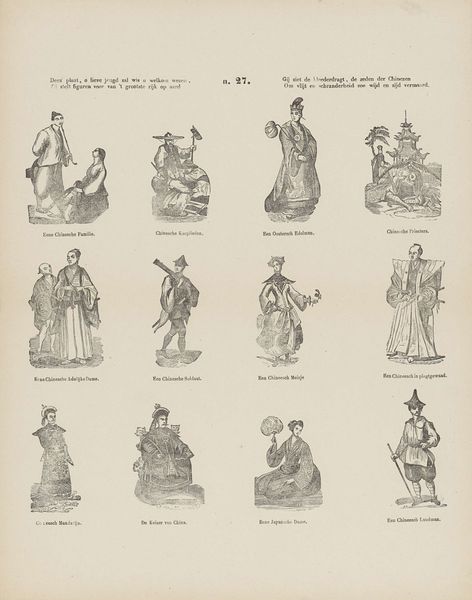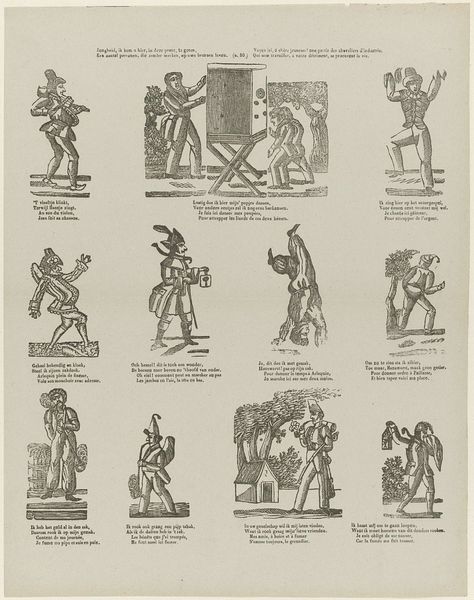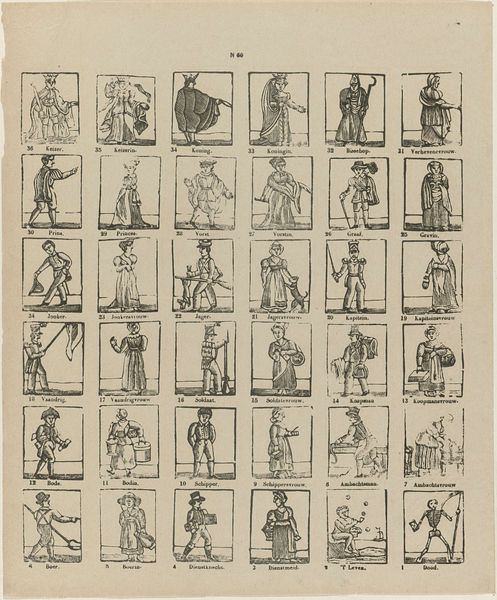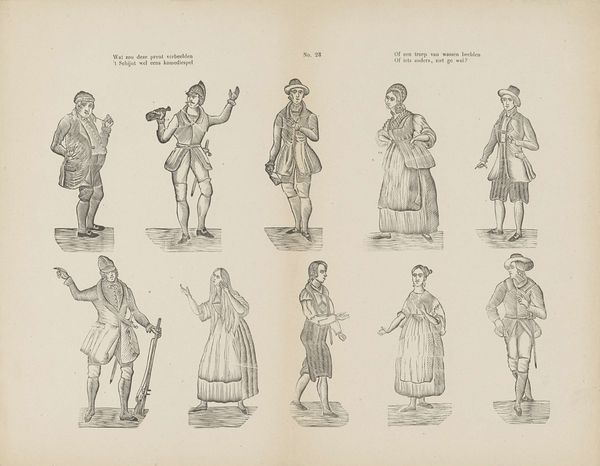
Volkeren van verscheyde landgewesten / Habitans de diverses Contrées 1833 - 1856
0:00
0:00
print, engraving
#
portrait
# print
#
genre-painting
#
history-painting
#
engraving
Dimensions: height 389 mm, width 333 mm
Copyright: Rijks Museum: Open Domain
Curator: This print, dating from between 1833 and 1856, is titled "Volkeren van verscheyde landgewesten," or "Habitants de diverses contrées," by Glenisson & Van Genechten. It's an engraving depicting different people from various regions, reflecting an interest in classification and ethnographic documentation prevalent in the 19th century. Editor: Right, but when I first saw this piece, before knowing all that, it struck me as a strange mix of a quirky fashion catalog and maybe, um, a lineup from some historical global village project. Each figure is so self-consciously posed, almost like paper dolls ready to be cut out. Curator: Yes, precisely! The arrangement highlights the visual categorization that was a significant aspect of how European societies understood the world during this period. Each figure is carefully labeled – Spaniard, Hollander, Islander, and so on. Editor: There's also an air of both admiration and disconnect. Each "habitant" is rendered with clear attention to detail in their attire, their...attributes, let’s call them. It's almost like looking at preserved specimens in a Victorian museum, meticulously pinned and labeled, yet lacking a living context. I’m interested in what is says and obscures. Curator: Exactly. The print comes at a time when colonialism and exploration deeply influenced scientific and artistic endeavors. These images served not just as documentation, but also as tools in shaping perceptions and, often, reinforcing hierarchies. Notice how there's a focus on differentiating between people and cultures, with an underlying suggestion of European superiority, a prevailing colonial attitude of the era. Editor: Oh definitely! And in that vein I’d even call the piece an "allegory" of social structure: everybody is placed at exactly his 'deserved' position; not really a celebration of variety, is it? But then again, this comes centuries after Swift’s Gulliver, so... were people missing some obvious cues, perhaps? Curator: In closing, what interests me most is the power such seemingly neutral images had and still have in informing global politics and ideology, through selection and context. Editor: It all makes one ponder on how classification, no matter how innocently intentioned, can transform human experience into objects of detached observation, all too conveniently.
Comments
No comments
Be the first to comment and join the conversation on the ultimate creative platform.

